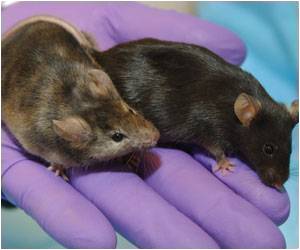Fear memory encoding is influenced by a sparse but potent population of inhibitory cells called parvalbumin-interneurons (PV-INs) in the amygdala.

‘All sensations, movements, thoughts, memories and feelings are the result of signals that pass through nerve cells (neurons), the primary functional unit of the brain and central nervous system.’





Fear memory encoding, the process responsible for persistent reactions to trauma-associated cues, is influenced by a sparse but potent population of inhibitory cells called parvalbumin-interneurons (PV-INs) in the amygdala, according to a study conducted at the Icahn School of Medicine at Mount Sinai and published in the journal Neuron. The Mount Sinai study focused on identifying the synaptic connections between inhibitory PV-INs, sensory pathways and neighboring principal neurons in the basolateral amygdala, a brain region involved in detecting and responding to dangerous situations.
"Our study is the first to show that this default silencing may, in part, be attributable to a sparse population of inhibitory PV-INs," says Roger Clem, PhD, Assistant Professor of Neuroscience and Psychiatry at the Icahn School of Medicine at Mount Sinai and lead investigator of the trial. "The complex anatomy of these cells may allow them to function like master regulators on a hair trigger, springing into action to suppress their neighbors when they detect even the slightest sensory perturbation."
To investigate whether fear learning alters PV-IN properties and their silencing effect on surrounding neurons, the Mount Sinai team introduced fear conditioning in a mouse model, pairing an auditory tone with a subsequent aversive foot shock. They found that when animals acquire a fear memory, the suppressive influence of PV-INs is relieved, allowing the fear system to respond more vigorously when the auditory stimulus is re-encountered in order to trigger a fight-or-flight response. All sensations, movements, thoughts, memories and feelings are the result of signals that pass through nerve cells (neurons), the primary functional unit of the brain and central nervous system.
When a signal passes from the cell body to the end of the cell axon that stretches away from the cell body, chemicals known as neurotransmitters are released into the synapse, the place where signals are exchanged between cells. The neurotransmitters then cross the synapse and attach to receptors on the neighboring cell, which can change the properties of the receiving cell. Found throughout the brain and produced by neurons, gamma aminobutyric acid (GABA) is an inhibitory neurotransmitter that binds to GABA receptors, making the neighboring neuron less excitable. Fear-related disorders like anxiety and post-traumatic stress disorder (PTSD) are thought to partly result from an imbalance of excitatory and inhibitory nerve cells in the basolateral amygdala.
Advertisement
The study findings indicate that inhibitory plasticity is a normal consequence of memory encoding and when dysregulated, it could lead to the hyper excitability of the amygdala, a hallmark of PTSD.
Advertisement
This research was supported by NIH grants MH105414 (R.L.C.) EY026053 (H.M.) and MH096678 (E.K.L.); a NARSAD Young Investigator Award (R.L.C.); and The Friedman Brain Institute at the Icahn School of Medicine at Mount Sinai.
Source-Newswise















